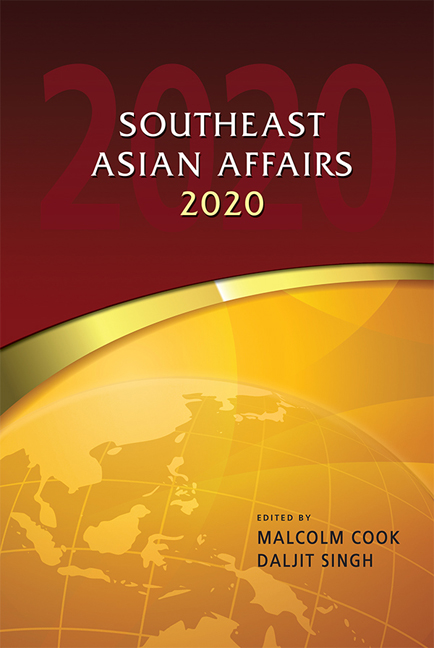Myanmar in 2019: Rakhine Issue, Constitutional Reform and Election Fever
Published online by Cambridge University Press: 24 November 2020
Summary
Since it came to power in March 2016 after winning in a 2015 election landslide, 2019 has perhaps been the most problematic year thus far for Myanmar's National League for Democracy (NLD) government. The long-standing Rakhine issue, the initiation of a parliamentary constitutional reform process, and early election fever are some of the key developments to have dominated Myanmar's political attention in 2019. These high-level political events, mainly involving the executive and legislative branches, were accompanied by growing public distrust in the judiciary and the police. All these factors posed challenges for Myanmar in 2019, with considerable implications on the country's domestic and international fronts. Economically, Myanmar was working quite well, though some challenges remain.
The Rakhine Problem: Domestic and International Aspects
The Dual Rakhine Problem
Until early 2019, the “Rakhine problem”, both within and outside Myanmar, was almost exclusively Rohingya-centric. Before the eruption of inter-communal violence in Rakhine State in 2012, the problem had not been envisaged as a Rakhine problem. The issue was merely referred to as the “Rohingya problem”, “conundrum” or “crisis”. After the 1990s, the Rohingya problem was framed internationally as an insurmountable crisis of forced migration and statelessness. Following the first and second Rohingya mass exoduses in 1978 and 1991–92, the Rohingya problem was respectively constructed by the Burma Socialist Programme Party (BSPP) government (1974–88) and the State Law and Order Restoration Council (SLORC) government (1988–97) as a colossal problem of (illegal) colonial migration, armed insurgency, and secession.
The dominant issue among Rakhine affairs remained the Rohingya problem, even after the outbreak of inter-communal violent and non-violent conflicts between Rohingya/non-Rohingya Muslims and Rakhine Buddhists from 2012 onwards, the emergence of a Rohingya “insurgency” led by the Arakan Rohingya Salvation Army (ARSA) from 2016 onwards, and the third Rohingya mass exodus from August 2017 onwards. These new problems have added two more layers to the Rohingya problem. First is the internal displacement of more than 100,000 Muslims in camps in Rakhine state. Second is a new protracted refugee situation that saw 909,000 Rohingyas being stranded in camps in Bangladesh as of March 2019, after about 745,000 Rohingyas fled following the Myanmar military's “clearance operation” in response to the ARSA attacks in August 2017.
- Type
- Chapter
- Information
- Southeast Asian Affairs 2020 , pp. 235 - 254Publisher: ISEAS–Yusof Ishak InstitutePrint publication year: 2020

